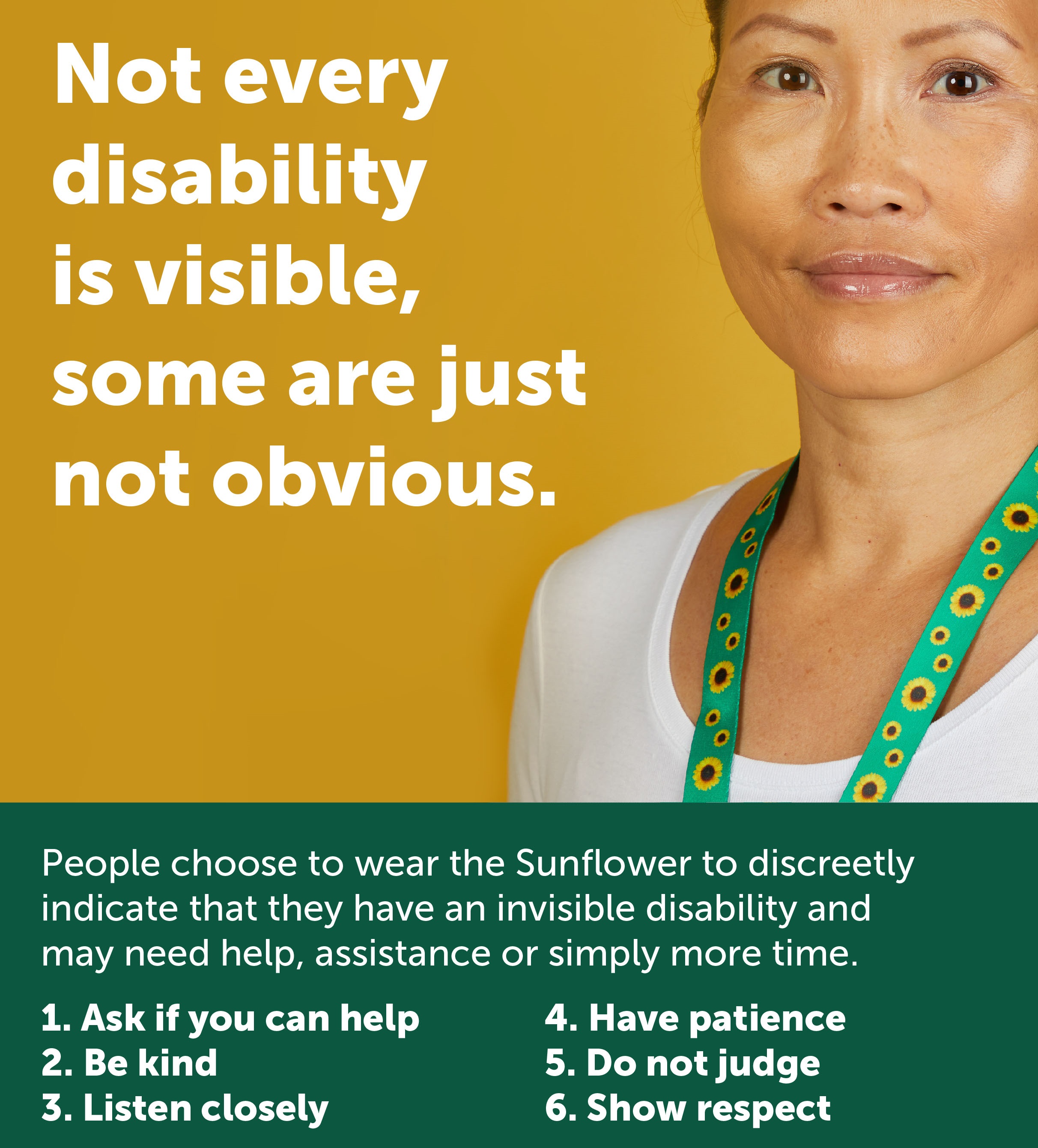.jpg)
Not every disability is visible

Globally one in seven of us live with a disability. And of those, 80% are invisible.
Non-visible disabilities, also known as invisible or hidden disabilities can be physical, mental or neurological and include, autism and Asperger syndrome, cognitive impairments such as learning difficulties and dementia, as well as mental health conditions and speech, visual impairments or hearing loss. They also include respiratory and chronic conditions such as asthma, diabetes, chronic pain and sleep disorders when these significantly impact day-to-day life.
Living with a non-visible disability, condition or impairment can make daily life more demanding – but it can be difficult for others to identify, acknowledge or understand. If you see someone adorning the Hidden Disabilities Sunflower symbol – they may need some additional support or consideration.
Dawn Taylor, Operations Manager in Student Support and Wellbeing wears a sunflower lanyard. In this blog, Dawn shares her story about living with a hidden disability and what the Sunflower means to her.
Why do I wear a Sunflower lanyard?
"When I look and think about a sunflower I see an indication of life, something positive and strong coming through out of the darkness.
"The sunflower symbol on lanyards and badges was designed to discreetly indicate that the person wearing this symbol is asking for patience, understanding and may at times need your support to get through their activity or life itself as they have a hidden disability or health condition.
"I heard about the Sunflower message a few years ago but during the pandemic it has come into its own, indicating, especially in locations where masks were compulsory, that the person wearing the sunflower needs your consideration and kindness. I have several hidden or invisible disabilities and health conditions which can make my life a struggle at times, like many other people but all we do is the best we can.
"Although I would love to wear a mask to help keep everyone safe, for me it is too difficult as one of my hidden medical conditions is that I have chronic Asthma. Anything that covers my mouth and nose, like wearing a mask, prevents me from breathing properly and can cause me to panic and feel anxious about what will happen.
"Wearing a Sunflower lanyard gives me comfort and empowers me to go places without my mask, knowing that people who know about the Sunflower symbol knows that I am not being awkward or that I do not care - but there is a reason for being the way I am.
"Not everyone knows about the Sunflower symbol which is why I am sharing a very small part of my life with you hoping that when you see a sunflower lanyard or symbol you recognise it and think this is a person who is sharing a small part of their life and is asking others not to be judgemental but to be understanding, which is a brave, and in my opinion, a precious thing to do.
"Amongst my other hidden medical conditions is that I live with depression. This can also cause situations that I fear or things that I find exceptionally difficult, in fact at times impossible, to do. When I am feeling low, the sunflower helps me to smile, as I mentioned earlier when I look and think about a sunflower I see an indication of life, something positive and strong coming though out of the darkness. What will a sunflower mean to you in the future?”
The Hidden Disabilities Sunflower Since its launch in 2016, the Hidden Disabilities Sunflower has been adopted globally by many airports, supermarkets venues, facilities, schools and universities to raise awareness and discreetly identify those who need additional support. The sunflower design was chosen as a discreet sign which is still clearly visible from a distance as well as being distinctive and joyful. The sunflower suggests happiness, positivity, strength as well as growth and confidence.
If you’d like to know more about Hidden Disabilities, and the sunflower symbol visit: www.hiddendisabilitiesstore.com
For more information please contact the Corporate Communications Team.


/prod01/wlvacuk/media/departments/digital-content-and-communications/images-2024/Diane-Spencer-(Teaser-image).jpg)
/prod01/wlvacuk/media/departments/digital-content-and-communications/images-18-19/220325-Engineers_teach_thumbail.jpg)
/prod01/wlvacuk/media/departments/digital-content-and-communications/images-2024/241024-Dr-Christopher-Stone-Resized.jpg)
/prod01/wlvacuk/media/departments/digital-content-and-communications/images/Maria-Serria-(teaser-image).jpg)
/prod01/wlvacuk/media/departments/digital-content-and-communications/images-2024/241014-Cyber4ME-Project-Resized.jpg)
/prod01/wlvacuk/media/departments/digital-content-and-communications/images-2024/240315-Research-Resized.jpg)
/prod01/wlvacuk/media/departments/digital-content-and-communications/images/Kabaddi-WC-(teaser-image).jpg)

